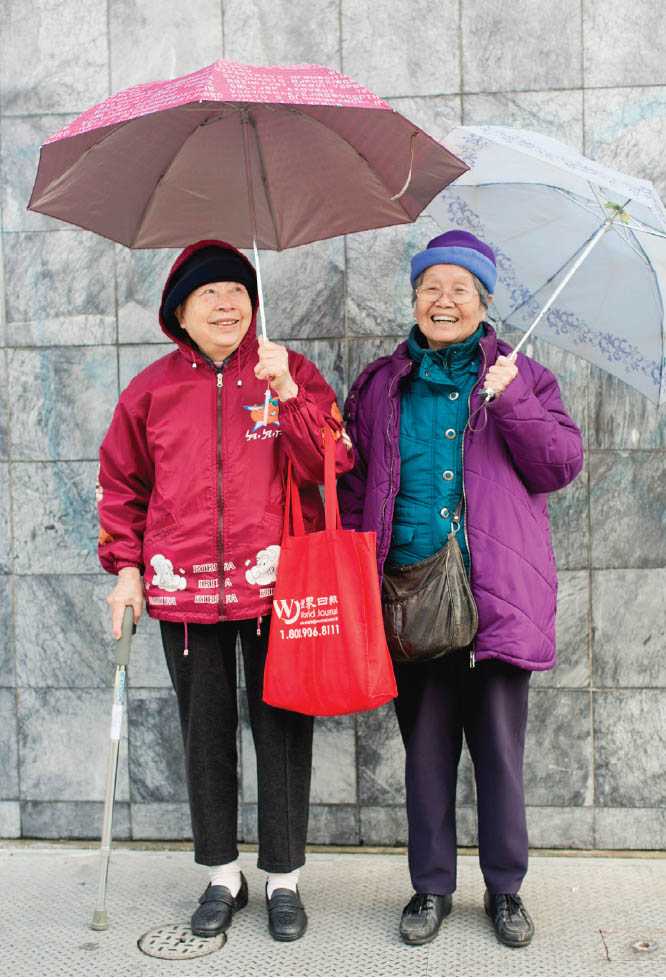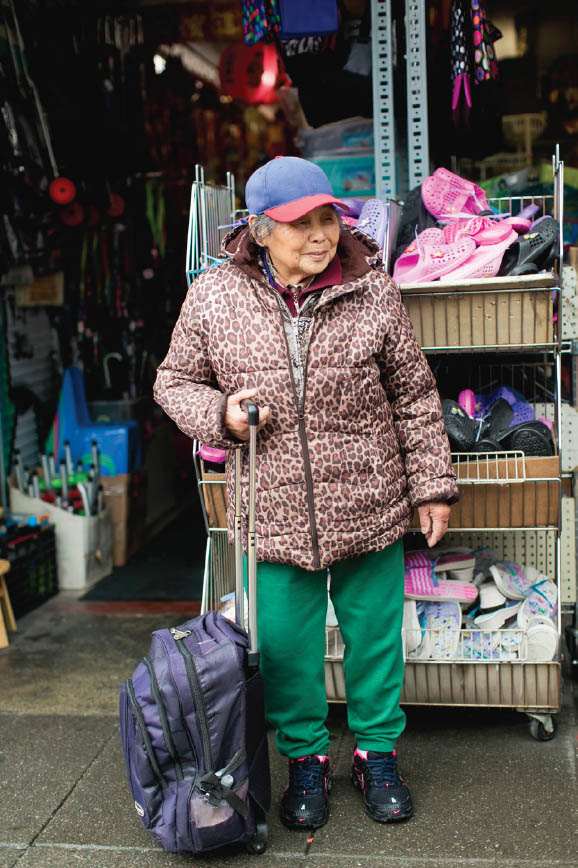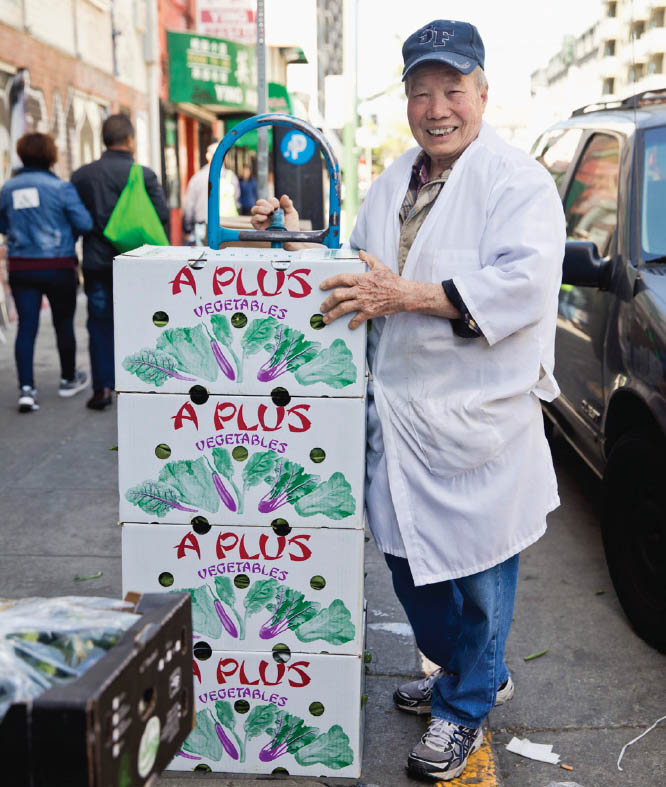
The Chinatown across the Bay
When San Francisco has gotten too cold (as in, the locals have had enough of us), we cross the Bay Bridge to sunny Oakland Chinatown, where seniors are more relaxed and warmed by the climate. We usually begin our scouting in the heart of things, on the corner of Webster and Eighth Streets, near Downtown. As we wait at the diagonal crossing, our eyes scan the dozens of passersby wearing floral wide-brimmed hats and pulling rolling metal shopping carts, ready to get their grocery shopping on. We’ll scan the line that snakes around the corner of Gateway Bank before it opens or peek into the Pacific Renaissance Plaza to scout seniors sitting on benches that circle the water fountain. After a few hours of lapping around Harrison, Webster, and Franklin Streets, we always pay a visit to Tian Jin Dumplings, which sells jianbing guozi, a street-food breakfast made of a long crisp Chinese fried doughnut wrapped in a thin omelet.
The markets are the pulse that keeps Chinatown busy and beating—whether it’s brick and mortar stores or the Old Oakland Farmers’ Market on Fridays. Ms. Wong, our favorite grocer at New Hop Lung Market, is always greeting customers outside the market, prepared for rain or shine with her assortment of hats. The employees at LG Supermarket grocery don minimal brown baseball caps with the store’s name as they hurriedly unpack deliveries to restock the outdoor stalls. Renegade produce and plant peddlers occupy street corners with their bounty of homegrown goods laid out on blankets—and interesting outfits to go along with them.




Oakland Chinatown was established in the 1850s, around the same time as San Francisco Chinatown. The first Chinese settlers in Oakland lived near the waterfront and established shrimp fisheries. There were dozens of these fishing encampments along the San Francisco Bay until many were forced to close because their traditional bag fishing methods were outlawed in 1911. China Camp in San Rafael is one of the few that remains standing, though it functions now only as a state park and historical landmark. In addition to fishing, the Chinese in Oakland worked on building the dams that, in 1868, created Lake Chabot and Lake Temescal.
The population increased by thousands after the 1906 earthquake, when many displaced Chinese left San Francisco for Oakland. Over the decades, different waves of Asian immigrants—Japanese, Korean, and Vietnamese—have also settled or opened businesses in Oakland Chinatown, creating a multicultural Asian community.